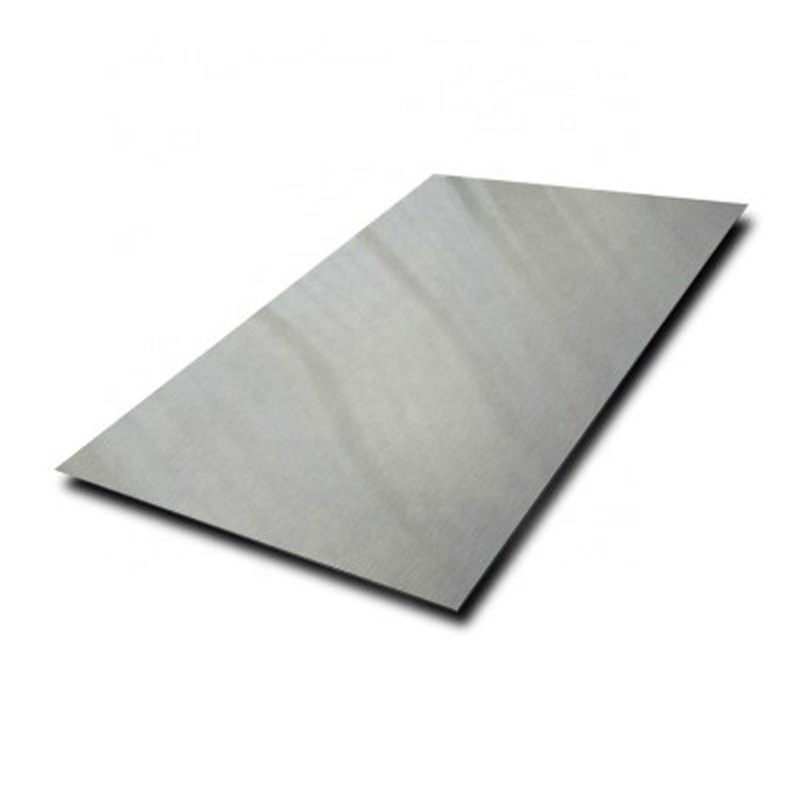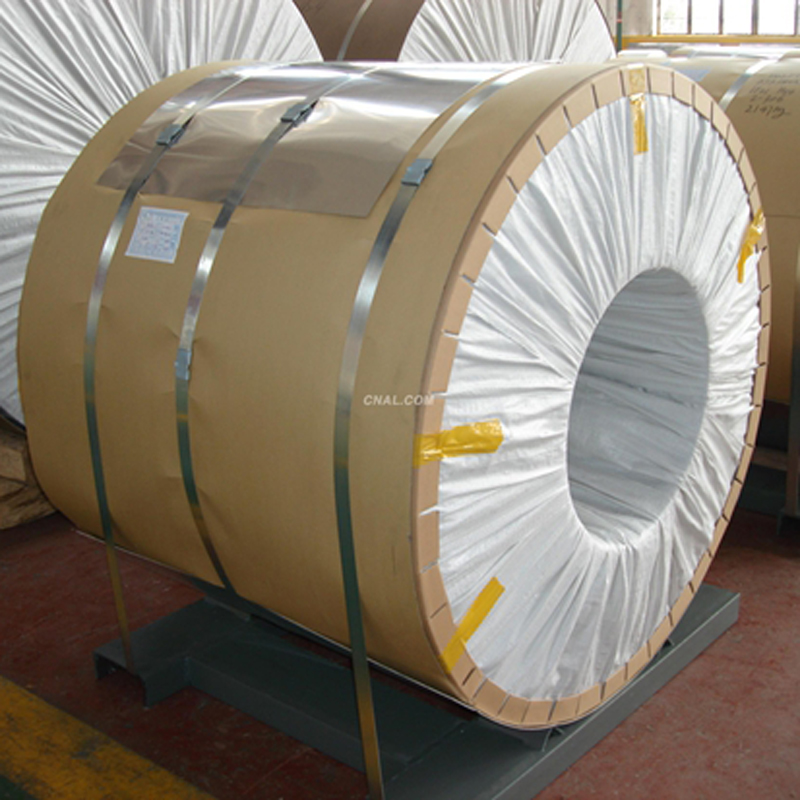-

Stainless Steel/ Nickle Alloy U Bend Tubes
Product presentation:
The U tube is usually used to exchange heat in process fluids with large radiators. The fluid is pumped out along a pipe, then through a U-junction, and back along a pipe parallel to the inflow line. Heat is transferred through the wall of the tube to the wrapping material. This design is used for industrial applications, where many U tubes can be poured into oil containers containing high heat capacity.
-

304 316L 2205 S31803 Stainless Steel Plate
Product presentation:
The corrosion resistance of stainless steel mainly depends on its alloy composition (Cr, Ni,Ti, Si, Al, Mn, etc.) and its internal organizational structure.
According to the manufacturing method of hot rolling and cold rolling two kinds, according to the tissue characteristics of the steel type is divided into 5 categories: austenite type, austenite-ferrite type, ferrite type, martensite type, precipitation hardening type.
Stainless steel plate surface smooth, has high plasticity, toughness and mechanical strength, resistance to acid, alkaline gas, solution and other media corrosion. It is an alloy steel that does not rust easily.
-

SA588 SA387 Alloy Steel Plate
Product presentation:
According to the content of alloy elements is divided into:
low alloy steel (the total amount of alloy elements is less than 5%),
Medium alloy steel (5% -10% of total alloy elements)
High alloy steel (total alloy element is higher than 10%).
According to the alloy element composition into:
Chromium steel (Cr-Fe-C)
Chromium-nickel steel (Cr-Ni-Fe-C)
Manganese Steel (Mn-Fe-C)
Silicon-manganese steel (Si-Mn-Fe-C)
-

Wear-Resisting Plate, Weathering Resistant Plate
Product presentation:
The wear-resistant steel plate is composed of two parts: the low-carbon steel plate and the alloy wear-resistant layer. The alloy wear-resistant layer is generally 1 / 3~1 / 2 of the total thickness. When working, the matrix provides the comprehensive performance such as strength, toughness and plasticity, and the alloy wear-resistant layer provides the wear-resistance to meet the requirements of the specified working conditions.
The alloy wear-resistant layer is mainly chromium alloy, and manganese, molybdenum, niobium, nickel and other alloy components are also added. The carbide in the metallographic tissue is distributed in the fiber shape, and the fiber direction is perpendicular to the surface. The microhardness of carbide can reach above HV1700-2000, and the surface hardness can reach HRC 58-62. Alloy carbide has a strong stability at high temperature, maintain a high hardness, but also has a good antioxidant properties, within 500℃ completely normal use.
-

SA516 Gr60 Gr70 SA387Gr22CL2 Container Plate
Product presentation:
Container plate is mainly used for pressure vessel use
-

S235JR S275JR S355JR Carbon Steel Plate
Product presentation:
Steel plates are divided into hot and cold rolled plates.
According to steel types, there are ordinary steel, high quality steel, alloy steel, spring steel, stainless steel, tool steel, heat resistant steel, bearing steel, silicon steel and industrial pure iron sheet.
High quality carbon structural steel can be divided into three categories according to different carbon content: low carbon steel (C 0.25%), medium carbon steel (C is 0.25-0.6%) and high carbon steel (C & gt; 0.6%).
High quality carbon structural steel is divided into normal manganese (0.25% -0.8%) and higher manganese (0.70% -1.20%), the latter has good mechanical properties and processing properties.
-

304, 310S, 316, 347, 2205 Stainless Flange
Product presentation:
Flange, also known as flange flange disc or rim. Usually refers to opening at the periphery of a disk-like metal body. Several fixed holes are used to connect other parts and are widely used in various mechanical equipment and pipe connections. Flange is parts connected between shaft and shaft for connection between pipe ends and also used at the inlet and outlet of equipment for connection between two devices such as reducer flange.
Flange is an important element connecting pipes and is widely used in various industrial fields. Its main function is to connect the pipe, so that the pipe system has good sealing and stability. Flanges are applicable to a variety of piping systems. Flanges can be connected to various pipes, including water pipes, windpipes, pipe pipes, chemical pipes and so on. Whether in petrochemical, power shipbuilding, food processing, medicine and other industries, can see flange. Flanges cover a wide range of piping systems, media, pressure levels and temperature ranges. In the industrial production, the correct selection and use of flange is an important guarantee to ensure the safe operation of the pipeline system.
-

304, 310S, 316, 347, 2205 Stainless Cut – Off Valve, Ball Valve, Butterfly Valve
Product presentation:
A valve is a device used to control the direction, pressure and flow of a fluid system. It is a device to flow or stop the medium (liquid, gas, powder) in the pipe and the equipment and control its flow rate.
The valve is the control component in the pipeline fluid delivery system, used to change the access section and medium flow direction, with the functions of diversion, cut-off, throttle, check, diversion or overflow pressure discharge. Valves used for fluid control, from the most simple stop valve to the extremely complex automatic control system used in a variety of valves, its various varieties and specifications, the nominal diameter of the valve from a very small instrument valve to the diameter of 10m industrial pipeline valve. It can be used to control the flow of various types such as water, steam, oil, gas, mud, various corrosive media, liquid metal and radioactive fluid. The working pressure of the valve can range from 0.0013MPa to 1000MPa, and the working temperature can be c-270℃ to high temperature of 1430℃.
-

304, 310S, 316, 347, 2205 Stainless Elbow
Product presentation:
An elbow is a pipe connector that is usually used to change the direction of the pipe. It consists of a curved stretch of a pipe that allows the fluid to change the flow direction within the pipe. Bbow are widely used in piping systems in industrial, construction and civil fields for conveying a variety of liquids, gases and solid particles.
The elbow is generally made of metal or plastic materials, with good corrosion resistance and pressure resistance. Metal elbows are usually made of iron, steel, stainless steel and other materials, and are suitable for the transportation of high temperature, high pressure and corrosive media. Plastic elbows are often used in piping systems with low pressure, low temperature and non-corrosive media.
-

Aluminum Tube (2024 3003 5083 6061 7075 etc)
Product presentation:
Aluminum pipes are mainly divided into the following types.
According to the shape: square pipe, round pipe, pattern pipe, special-shaped pipe, global aluminum pipe.
According to the extrusion method: seamless aluminum pipe and ordinary extrusion pipe.
According to the accuracy: ordinary aluminum pipe and precision aluminum pipe, in which the precision aluminum pipe generally need to be reprocessed after extrusion, such as cold drawing, rolling.
By thickness: ordinary aluminum pipe and thin-wall aluminum pipe.
Performance: corrosion resistance, light in weight.
-

Aluminum Coils/ Aluminum Sheet/ Aluminum Alloy Plate
Product presentation:
Aluminum plate is a rectangular plate processed from aluminum ingots, which has a wide range of applications. It can be used for lighting, household appliances and furniture in daily life, as well as indoor decoration. In the industrial field, it can also be used for the processing of mechanical parts and the production of molds.
5052 aluminum plate. This alloy has good formability, corrosion resistance, candlestick resistance, fatigue strength, and moderate static strength, and is used in the manufacturing of aircraft fuel tanks, oil pipes, as well as sheet metal parts for transportation vehicles and ships, instruments, street light brackets and rivets, hardware products, etc.
-

Brass Strips, Copper Sheet, Copper Sheet Coil, Copper Plate
Product presentation:
Copper is a non-ferrous metal closely related to human beings. It is widely used in electrical industry, light industry, machinery manufacturing, construction industry, national defense industry and other fields, and is second only to aluminum in the consumption of non-ferrous metal materials in China.
Copper is the most widely used and the largest used in the electrical and electronic industries, accounting for more than half of the total consumption. Used in the manufacture of various cables and wires, motors and transformers, switches, and printed circuit boards. In mechanical and transport vehicle manufacturing, used to manufacture industrial valves and accessories, instruments, sliding bearings, molds, heat exchangers and pumps, etc.











